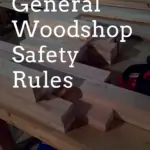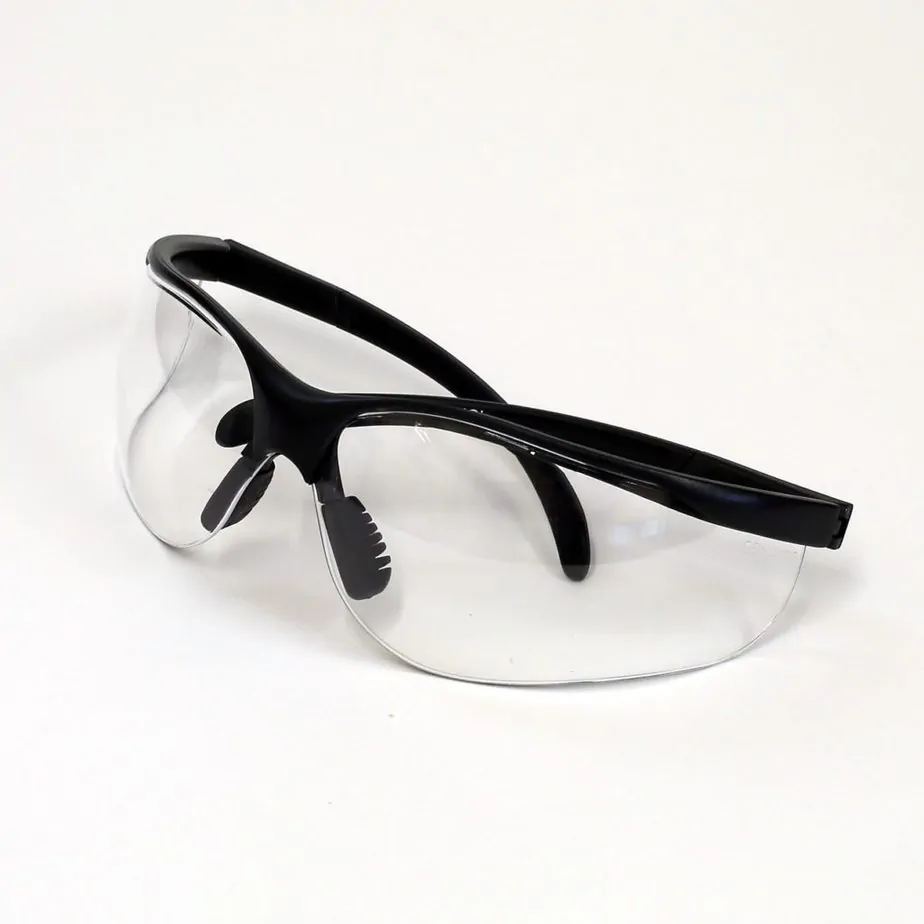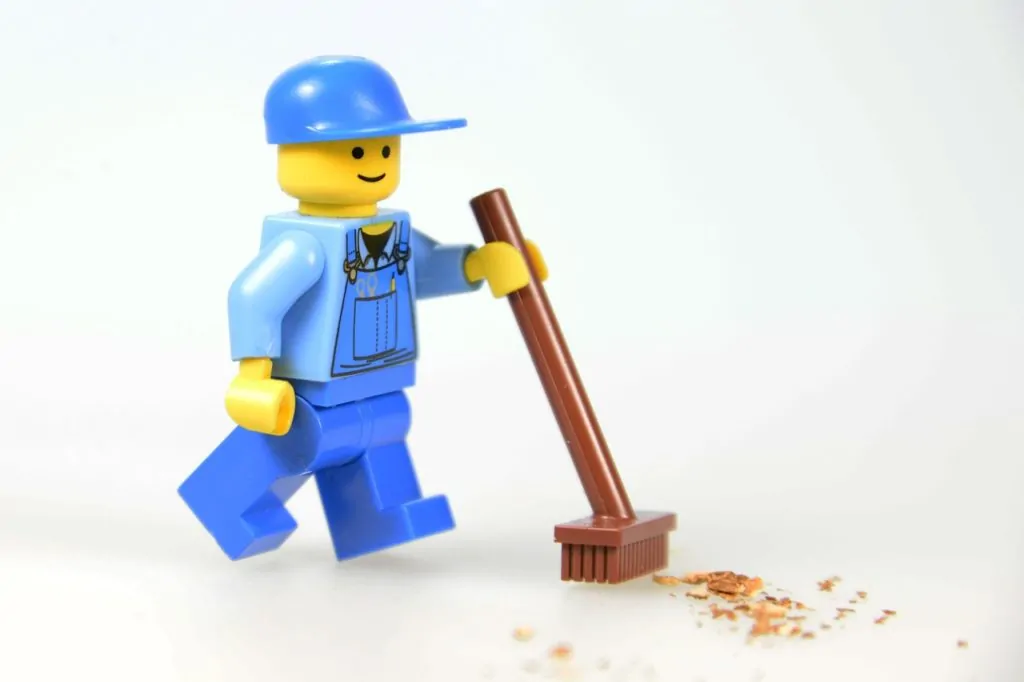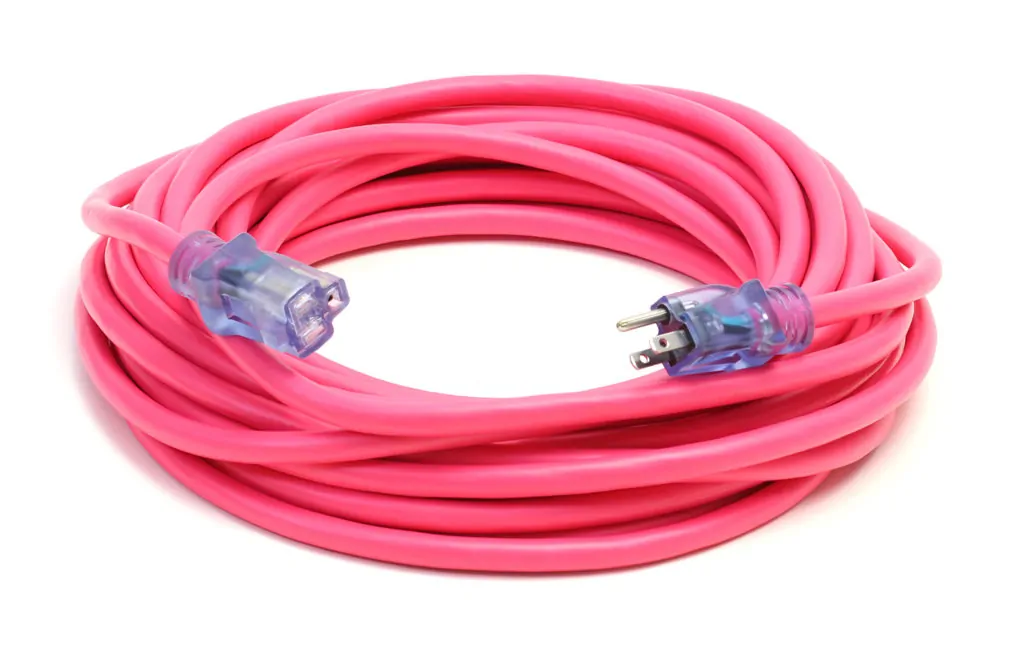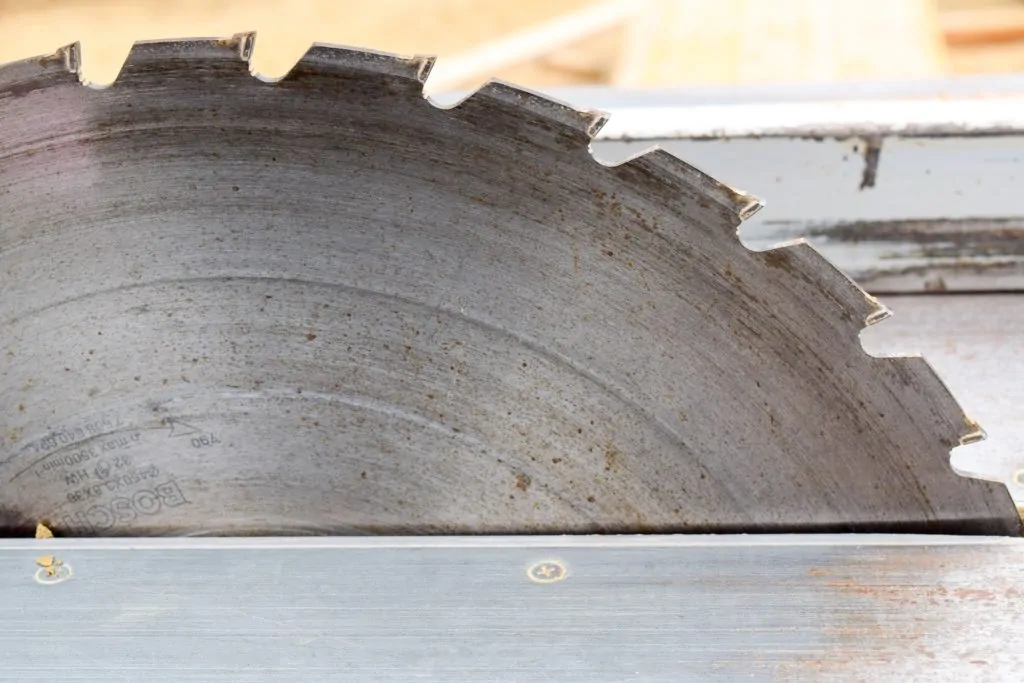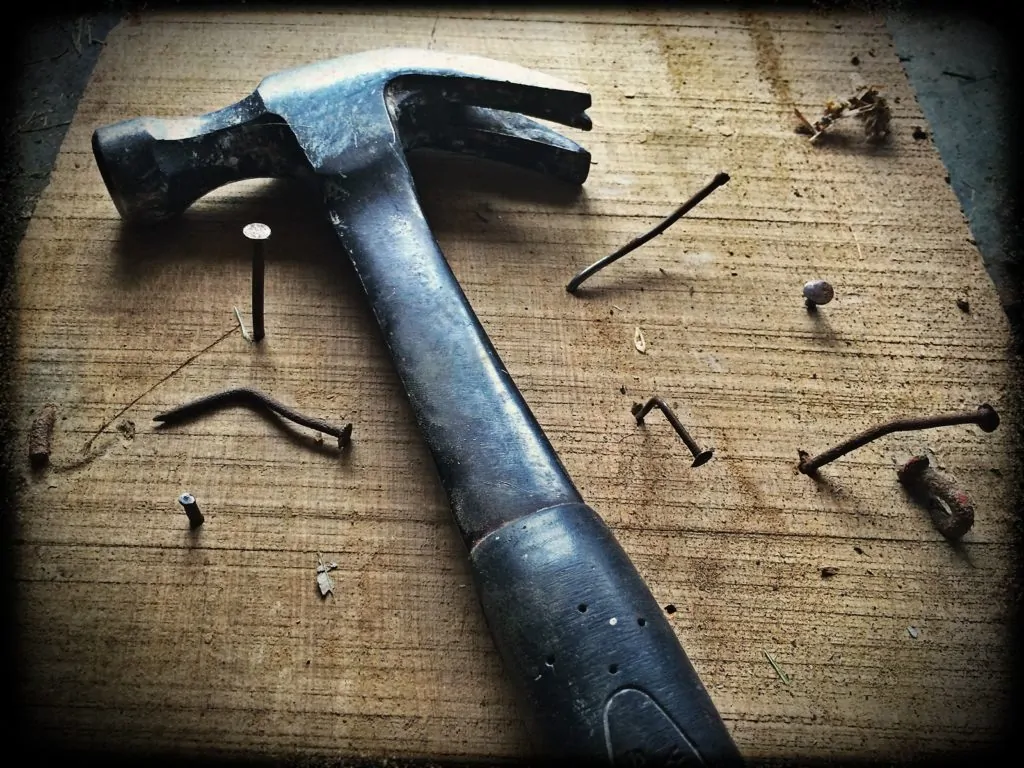Much of my content on this website revolves around woodworking and tools, so I figured it would behoove me to talk about wood shop safety. It is an important aspect of being a DIYer.
[toc]
Some of the tools you will use in a woodworking environment can cause serious injury if used improperly. Each tool has specific uses, and each has unique hazards. Because of this, you should learn how to use each tool you own.
This is by no means a comprehensive document on how to stay safe while woodworking, but it does cover the most important rules. I’m sure there are some things that I have not thought about. If you feel something is missing, then don’t hesitate to let me know.
If you commit to following these guidelines (along with using common sense), then you should have a safe and enjoyable experience. By taking careful consideration of what you are doing, it is easy to stay safe.
10 General Woodshop Safety Rules
1. Wear Safety Glasses
Some rules simply state “wear safety equipment”. I’ve gone a step further and specified that you should wear your safety glasses when working. This is because wood chips and debris can fly up in your face at almost any time when cutting, sanding, etc.
There really isn’t a time during active working that you should be without your safety glasses. The risk is simply too high to damage your eyes, and the issue is easily resolved by simply wearing some glasses.
2. Keep Floor and Shop Clean
There are a number of reasons you should keep your work area clean. These should sound like common sense, but it is worth repeating.
First, it is a tripping hazard to have things laying around on the floor. Some of the things that get on the floor in a shop can really get in the way, like blocks of wood.
Also, you should not leave sawdust on the floor. Ideally you will have a vacuum system in place to minimize the amount of sawdust spread. If this is not the case, clean up after using each tool. Sawdust is a fire and breathing hazard (can be a tripping hazard if you have enormous amounts).
3. Wear Appropriate Clothing
This means do not wear loose, baggy, and otherwise ill-fitting clothing. You do not want to wear anything that hangs off your body like jewelry. The reason for this is because it can get caught in a tool. Nothing should be hanging down when you lean over to work.
Some people like to wear gloves, but I discourage this unless you are simply moving boards and don’t want to get splinters. Gloves can be dangerous with saws and other spinning parts. The last thing you want is for something to catch a piece of your glove and pull your hand towards it.
4. Minimize Extension Cords
Ideally you will not have extension cords. This can be done by installing wiring overhead and in the floor, along with positioning tools along the wall. Obviously this is not possible for many people.
Because you will most likely have to use an extension cord, you should not have them strung all across the floor everywhere. Using ONE extension cord is the best. This way you will only have one machine with power to it at any time. Also, you will minimize the tripping hazard in your shop.
5. Avoid Alcohol, Drugs, and Other Impairments
Do not operate tools while under the influence of any intoxicants. This is common sense, and while I’m sure there are plenty of people that like to have a beer while they build with a little wood, it’s generally not recommended.
Know your limits, and don’t do anything that will impair your vision or coordination. This includes working while taking medication that dampens your ability to operate properly.
6. Keep Equipment Sharp
I mean this in more than one way. First of all, you should keep all of your blades sharp and performing well. If something starts to dull, either scrap it and get a new one or sharpen it yourself (if you are capable of this).
A dull tool will cause poor performance and can result in dangerous situations. For example, a dull router bit can break apart because it gets too hot or damaged during operation. A router bit can spin at up to 26,000 rpm. As the diameter of a bit increases, so does the speed at which the outside is moving, and it can reach speeds beyond 100 mph. If it breaks apart then the flying debris will cause damage.
Another way I mean to keep equipment sharp is to keep it clean and without broken parts. Be sure it is oiled and set properly. Also, it needs to be grounded correctly.
If it makes funny noises or does any smoking, then shut it off and figure out what is going on.
7. Read Owners Manual
For each tool you use you should thoroughly read and understand the owners manual. You need to have a complete understanding of how the machine functions and the tasks that it can accomplish.
Most tools now have plenty of reviews and videos on YouTube that you can pull up and watch as well. These help to see the actual tool in action.
You should not go to any machine in your shop without having a good understanding of how it works. Obviously you will get better at it over time, but initially this knowledge will help prevent accidents.
8. Avoid Distractions
This should go without saying, but with the prevalence of phones and other distractions, you should be aware of how this affects your safety. Each machine when running requires your utmost attention.
Your phone may ring or get a text, but make sure to finish your cut, etc. before you respond. I generally like to have music on in the background. This may even be frowned upon in some circumstances but it is not distracting to me. The key is to always consider what you are doing at any given moment.
9. Check Material for Metal, Knots, etc.
The wood that you are working with can have imperfections that cause it to kick back, get stuck, etc. It is important to inspect your workpiece before you make any cuts.
If you have some reclaimed lumber this is even more important because it can contain nails, bolts and other debris. You can usually cut through nails, but it may damage the blade. I would not recommend it.
Knots in wood usually do not create issues if you are prepared for the cutting to take longer. Just keep your blades sharp and you should not have issues.
10. Use Push Sticks, Miter Gauges, Etc.
Use tools that keep the workpiece steady and keep your hands away from the cutter blade (this includes making sure the equipment has its safety features in place).
This includes, but is not limited to: push sticks, miter gauges, custom built sleds, featherboards, and push blocks. These tools are meant to keep your hands away from the blade and hold the workpiece where it needs to be. A sled on a table saw can hold a panel steady and also prevent kickback. Featherboards hold boards steady against the fence of a router table.
You need to use these on any tool where you move the wood as opposed to the tool. Sometimes the saw can grab the workpiece and throw it or jerk your hand into it quicker than you realize. Using these can help prevent that from happening.
Conclusion
Always use the correct machine for the job. Don’t try to make something do it wasn’t designed to do.
If you follow the rules above, you are well on your way to a safe wood shop environment. It is not totally inclusive, meaning there are still some rules and guidelines that I didn’t list here.
Accidents do happen, even to experts. That comment is not meant to scare you, but to make sure you have a healthy respect for what you are doing.
Here is a good resource for some more rules on woodworking safety.

